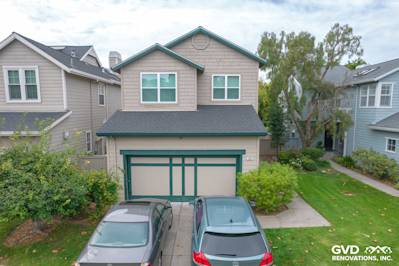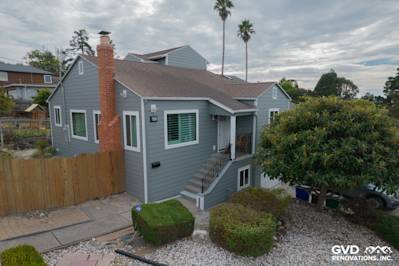Every homeowner should be vigilant when it comes to various house problems, none more so than dry rot. Owing to the severity of its impacts, identifying and preventing dry rot is crucial. This blog will equip you with the necessary knowledge on preventing dry rot, maintaining your properties' longevity, and saving on costly repairs.
Understanding Dry Rot - A Hidden Adversary
Dry rot, scientifically named Serpula lacrymans, is vastly deceptive – despite its name, it thrives in damp and moist environments, attacking the structural integrity of timber by extracting moisture, leaving it dry and brittle.
Detecting Dry Rot - A Critical Skill
To construct an effective plan for preventing dry rot, you first need to recognize it. Here are some signs to look out for:
- Shrunken, brittle, or cracked wood
- Yellow or red spore dust on surfaces
- Unpleasant musty smell
- Strands of grey or white fungus on the wood
How Dry Rot Becomes a Problem
Dry rot is a serious issue that can damage your property's structural integrity if left untreated. It spreads quickly and extensively, which makes preventing dry rot important before it becomes a costly repair task.
Essential Steps for Preventing Dry Rot
Being proactive plays a vital role in preventing dry rot. You can achieve this through multiple strategies designed to help you maintain a dry rot-free environment.
1. Controlling Moisture Levels
Dry rot fungus needs moisture to thrive, usually where the humidity is above 50 percent. Therefore, maintaining a dry environment is crucial in preventing dry rot. Here's what you can do:
- Regularly check for plumbing leaks, gutter leaks, and damp basement or crawlspace.
- Use dehumidifiers in high humidity areas like the bathroom to reduce the overall humidity levels.
2. Ensuring Proper Ventilation
Improper ventilation creates the perfect atmosphere for dry rot to thrive due to the buildup of damp and humid air. Boosting air circulation can help control humidity levels and prevent dry rot.
3. Regular Maintenance and Inspection
Perform regular house checks to identify wet and humid spots and take quick remedial action. Pay extra attention to wooden structures like beams, floor joists, and window frames.
4. Use of Fungi Preventive Treatments
Various timber treatments are available that can prevent the onset and spread of dry rot. These preservatives create an unfavorable environment for the fungus and enhance timber’s resilience against moisture.
Seeking Professional Help for Dry Rot
Although the presence of dry rot can be worrying, there are professional services available to help prevent and treat this problem. Experts can provide a comprehensive dry rot treatment plan, including necessary repairs for any structural damage caused by the fungus.
Preventing dry rot is certainly much more economical than having to repair structural damage. With the methods highlighted in this blog, you can shield your home from the disastrous effects of dry rot. By understanding the cause and nature of dry rot, conducting regular checks, controlling humidity levels, and seeking professional help when needed, you can maintain the health and knack of your house for years to come.

Frequently Asked Questions about Preventing Dry Rot
How Can I Identify Dry Rot?
The first signs of dry rot can often be mistaken for common water damage, with darkened or damp-looking patches on the wood surface. Over time, you may notice shrinkage or warping, as well as a distinct mushroom-like smell. Advanced stages of dry rot may cause the wood to crumble to the touch.
Can Dry Rot Be Prevented?
Absolutely! Dry rot prevention is not only achievable but advocated. By controlling moisture levels, ensuring adequate ventilation, addressing leaks, and staying on top of routine maintenance, you can significantly decrease your risk of falling victim to this pervasive wood-destroying fungus.
Is Routine Maintenance Crucial in Preventing Dry Rot?
Yes, preventive maintenance can be invaluable in the fight against dry rot. Yearly inspections of your home's vulnerable wooden structures, including anywhere that wood comes into contact with moisture, can help you spot any signs of rot early, preventing more significant damage.
How Is Dry Rot Prevention Linked to Ventilation?
Dry rot thrives in moist, poorly ventilated environments—an unfortunate condition many homes unknowingly harbor. By maintaining proper ventilation, you discourage conditions conducive to dry rot, allowing moisture to evaporate more quickly before it can seep into your woodwork.
Is Dry Rot Prevention Costly?
The cost of preventing dry rot can vary based on your home's condition, its exposure to wet conditions, and the preventative measures you choose to implement. However, keep in mind that the cost of repairs following an extensive dry rot outbreak may be significantly higher, making dry rot prevention a worthwhile investment.
How Regular Should Dry Rot Inspections Be?
Regular inspections are key to prevention, but how often should you inspect your property for signs of dry rot? A rule of thumb is annually, but areas more exposed to moisture—like bathrooms, basements, and the area around guttering – could benefit from semi-annual checks.
Can Chemical Treatments Help Prevent Dry Rot?
Chemical treatments can indeed provide a useful line of defense against dry rot. Applying these treatments to timber helps to create a hostile environment for any rot-inducing fungus, thereby aiding in the prevention of dry rot.
Is Professional Assistance Necessary for Preventing Dry Rot?
Whilst many prevention measures can be DIY, professional assistance should certainly be considered, especially when checking for early signs or treating existing dry rot. Specialist knowledge helps ensure that every potential problem area is thoroughly examined and that treatment is adequate and safe.
How Durable Is Wood After Dry Rot Prevention Treatment?
With a proper prevention regime including inspections, ventilation, moisture control, and possibly chemical treatment, your wood should remain resilient against dry rot. Even after an infected area has been treated, maintaining these prevention practices will keep your wood as durable as possible.
Can I Use Preventive Paints to Deter Dry Rot?
Yes, preventive paints, especially those containing fungicides, can be an effective way to ward off dry rot. They work by creating a barrier that prevents the wood from absorbing moisture, thus restricting the fungi’s essential life-source.
Pros of Preventing Dry Rot
Property Longevity
Enhancing Durability
Preventing dry rot is synonymous to prioritizing the longevity of your property. Dry rot can cause considerable damage to the wood structures in your home or property. By nipping this problem in the bud, you ensure that the structural integrity of your wood structures remains uncompromised, therefore, contributing to the overall durability of your property.
Preserving Property Value
Neglecting to deal with dry rot might eventually lead to irreversible damage, translating to a significant decrease in your property's value. Thus, taking preventative measures not only helps maintain your property's worth but could also potentially enhance its value by presenting a well-maintained and cared-for property to prospective buyers.
Cost-effectiveness
Reduced Repair Costs
Addressing a problem before it escalates usually results in cost savings in the long run, and this applies to the prevention of dry rot. By preventing dry rot, you can avoid the heftier charges associated with treating and repairing extensive damage.
Preventive Maintenance is Cheaper
Generally, the costs of preventive maintenance against dry rot are much lower compared to the costs of restoring or replacing rotten wood. Scheduling regular inspections and timely maintenance checks helps to identify potential risks and tackle them at their earliest stages.
Health Benefits
Mitigate Health Risks
Dry rot can cause health issues including aggravated allergies and respiratory problems due to the spores it releases. By preventing dry rot, you can enhance not only the structural health of your property but also the overall health and wellbeing of its inhabitants.
Cons of Preventing Dry Rot
Costs Involved
Initial Prevention Costs
Despite the long-term savings, preventing dry rot does come at a price. Depending on the methods used, preventive treatments can sometimes be expensive. This may include the cost of better-quality, dry rot-resistant wood or professional service fees if you hire an expert to check your house regularly.
Time and Effort
Requires Regular Inspections
Preventing dry rot is a continuous effort and involves performing regular inspections of your property, particularly any wood structures, for any sign of dry rot. If you are not a DIY enthusiast or if your schedule is already filled to the brim, this can be quite a burden.
Maintenance Work Can Be Labor-Intensive
Preventive maintenance often involves a series of steps – from thorough inspections to identifying susceptible areas, to treating and sealing them. All of these processes can be labor-intensive and time-consuming.
Technical Know-How
Requires A Certain Level Of Skills
Prevention of dry rot is not just about exterminating. It includes understanding the conditions that make it thrive, identifying possible issues early on, and knowing the suitable course of action to prevent it from happening. This may seem overwhelming if you are not well-versed in the technical aspects involved in wood care and maintenance.
Requires Professional Intervention In Some Cases
While minor issues can be addressed DIY, significant prevention measures often require the assistance of a professional. If the property is large or the work involved is too extensive, there's no other way around than to hire professionals.
Myths and Misconceptions about Preventing Dry Rot
Dry rot is a widespread issue causing substantial damage to the structure of homes, specifically the ones made of wood. However, there are numerous myths and misconceptions surrounding the prevention of dry rot that need to be debunked for better understanding and effective action. Offering clarity on these misconceptions can equip homeowners with the right knowledge to tackle this menace more effectively.
Myth 1: Dry Rot Can Occur Anywhere
Misconception: Any Part of Your House Can Get Dry Rot
Many people fall prey to the belief that dry rot can occur anywhere in their homes. It is true that dry rot is a common type of wood decay, but it does not mean that each part of your home is susceptible to it.
The Truth: Dry Rot Needs Specific Conditions to Thrive
Dry rot isn't as omnipresent as believed. It requires specific conditions to thrive, primarily a damp environment. Dry rot spores are virtually everywhere, but they need a moisture content of about 20% in the wood to start growing. Therefore, not all of your wooden structures are at risk, only the places that are often damp, such as basements, window frames, and locations where there are leaks.
Myth 2: Dry Rot and Wet Rot are the Same
Misconception: Dry Rot is Just Another Name for Wet Rot
There is a prevalent misconception that dry rot and wet rot are synonymous and cause similar damage. Some homeowners fail to distinguish between the two, leading to incorrect treatment methods.
The Truth: Dry Rot is Different From Wet Rot
Dry rot and wet rot are two different types of wood decay that require different treatment methods. While wet rot usually occurs in highly damp conditions and remains localized, dry rot, on the other hand, can spread much further and cause extensive damage.
Myth 3: Chemical Treatments Alone Can Prevent Dry Rot
Misconception: Using Chemical Treatments Is Enough to Prevent Dry Rot
A common belief held by many is that chemical treatments alone can be effective in preventing dry rot. Homeowners often resort to using fungicide sprays and paints as an easy solution.
The Truth: Preventing Dry Rot Needs a Multi-Pronged Approach
While fungicides can kill and prevent the growth of dry rot fungi, it's important to understand that they are not a standalone solution. The key to preventing dry rot is moisture control. It involves locating the source of moisture and fixing it, ensuring adequate ventilation, and using fungicides when needed. Thus, preventing dry rot requires a more comprehensive approach than just chemical treatments.
Myth 4: Dry Rot Can Spread Through Masonry
Misconception: Dry Rot Can Infest and Spread Across Non-Wooden Structures
A major misconception is that dry rot can spread through non-wooden structures such as bricks and stones, leading to the destruction of a whole building.
The Truth: Dry Rot Cannot ‘Eat’ Your Masonry
Dry rot fungus, despite its capacity for extensive damage, only destroys organic material — specifically, the cellulose and hemicellulose found in wood. While it can use masonry as a pathway to reach other wooden parts of a building, it does not consume or damage the masonry itself.
Myth 5: Small Infestations Can Be Overlooked
Misconception: Small Patches of Dry Rot Don’t Matter Much
Some homeowners believe that small, isolated areas of dry rot infestation are not a threat and can be overlooked.
The Truth: Even Small Dry Rot Infestations Must Be Treated Promptly
The truth is, even a small patch of dry rot can lead to significant problems if not treated immediately. Due to its ability to spread, any size of dry rot infestation poses a potential risk to the structure of your home and must be addressed promptly.
In conclusion, the more you know about dry rot, the better you can prevent it. While these myths represent some of the most common misconceptions, it's crucial to consult with professionals for prevention and treatment plans. With the facts at your disposal, you can effectively safeguard your home against the serious threat of dry rot.
Summary
Preventing dry rot is really all about smart maintenance. You just have to make sure you're checking places in your home that are prone to moisture or leaks. If you find any signs of excess moisture or wooden areas that are starting to feel soft, addressing it as soon as possible can go a long way in stopping dry rot from getting a foothold. Also, remember to use quality wood for constructions or repairs, because this can act as a solid foundation for prevention.
Being vigilant about checking the condition of your woodwork on a regular basis plays a huge role in preventing dry rot. It’s like with your health - catching potential issues early is key. So, make it a habit to conduct thorough check-ups of all wooden structures in your home. Plus, immediately repairing any roof leaks, plumbing issues, or other moisture problems reduces the risk of dry rot infestation.
So, when it comes down to it, preventing dry rot isn’t as daunting as it may seem, it is definitely achievable. Good quality construction materials, identifying and eliminating moisture sources quickly, and engaging professionals when necessary are your best bet. With these preventative measures in place, you’ll be enjoying your dry, healthy wood for years to come. And let's be honest, that's a worthwhile endeavor given the potential damage and expenses you'll be saving yourself from.
About Bay Area Siding Company
Bay Area Siding Company, located in the beautiful Bay Area, CA, is your local go-to for all things siding. We're a team of experienced professionals in residential and commercial siding installation, repair, and replacement. With a meticulous approach to every project, our company proudly delivers superior craftsmanship and a seamless service experience to all our clients. Our commitment to the community we serve and the environment sets us apart. In our business, it's not just about siding, it's about building lasting relationships and enhancing the beauty and durability of homes throughout the Bay Area. Experience the Bay Area Siding Company difference today!












